Dehumidifiers are crucial for controlling relative humidity indoors to alleviate issues caused by excessive moisture like mold and allergens. However, as these devices work to extract water from the air for dehumidification, the most common question arises — can this water be safely consumed after it goes through the filtration process? This article targets dehumidification water chemistry, the filter system, and their health risks. Considering the presence of contaminants, the filtration techniques, the safety measures and standards used, readers can assess and conclude the possibility of drinking the water after proper dehumidifier filtration.
What exactly is dehumidifier water and how is it collected?
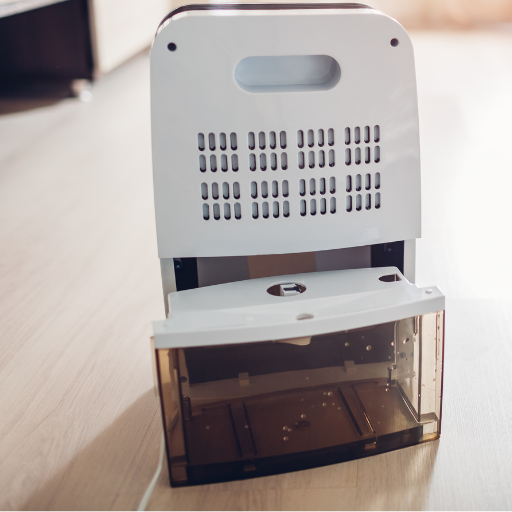
Dehumidifier water is the liquid that can be gathered from the unit’s tank. Alongside coils are fans and a condenser within the dehumidifying unit that cools the air and circulates it via a drier. During this process, the moisture content gets extracted. After the air has passed through the drier coils, the now cold, dehydrated air is set free once more into the space. The ultimate result is drier air which is circulated back into the surrounding area. The tank or drain disposes of the water condensed from the air. Impurities, microbes, and dust are likely to be present during water accumulation in the tank.
Explaining the process of the dehumidifier
Water collection inside a dehumidifier uses condensation and humidity control. Evaporator coils, cooled with the help of the refrigeration cycle, allow the fan to draw in humid air. Condensation begins when the coils have temperatures lower than the dew point, ultimately turning water vapor into liquid. After being collected, the water sits ready to drip into disposal systems within the tank.
The temperature of the condenser coil and the specific humidity of the air can be used to measure the efficacy of the desiccant dehumidifier. There is also the factor of Dew point temperature, which is the temperature at which water condenses from vapor and is highly influenced by the air temperature and the relative humidity. Most dehumidifiers are rated by the amount of moisture they can eliminate daily, which is often categorized in pounds per day and estimated in standardized conditions, for example, 80 degrees and 60 percent relative humidity. Other factors contribute to moisture removal, such as the airflow rate, which is normally calculated in cubic feet per minute CFM. Maintaining filters and coils effectively reduces the risk of contamination while improving collection efficiency.
Comparison of purity between water produced by a dehumidifier and distilled water
Dehumidifier water is often compared to distilled water, but due to the different applications and techniques used to acquire the water, both differ greatly in purity. Dehumidifier water is a result of air condensed moisture, and while it looks clean and clear, it is made with impurities and microorganisms mixed in with the outside air and even the components of the dehumidifier. It is clearly visibly unsafe for humans to ingest or use in sensitive areas such as a medical workplace.
On the other hand, distilled water is obtained by a procedure known as distillation, which entails removing pure H2O from its gaseous state and condensing it back into liquid form. Distilled water is extremely purified and is commonly utilized in laboratories, medical instruments, and even humidifiers, which cannot tolerate mineral build-up. This procedure is beneficial as it erases any remaining dissolved salts, minerals, or other impurities, attaining the highest purity level.
From a technical perspective, water captured by dehumidifiers can include VOCs, dust, and even microorganisms mixed with air in trace amounts, depending on the effectiveness of the air filter used in the particular device. In contrast to distilled water, water collected from dehumidifiers has high conductivity; however, it exhibits great purity as free ions are lacking.
Possible Contaminants Found Inside Collected Dehumidifier Water
The water collected from a dehumidifier has the potential to be contaminated due to several reasons stemming from the air around it and its internal structure. Foremost among these compounds are VOC’s (Volatile Organic Compounds), which are chemicals that exist in gases and can be emitted from household items or cleaning supplies which can potentially mix with the condensed water. Other contaminants might include airborne organisms such as bacteria and fungi, which may have grown in the water due to poor filtration or not cleaning the dehumidifier regularly. Even dust and other PM2.5 or PM10 particles can be present, depending on the air quality and the dehumidifier’s effectiveness at filtering the air around it.
The water collected can be more electrically conductive then distilled water, which means, from a technical perspective, it might have higher amounts of dissolved ions or trace minerals. This can be permanently recorded with an electrical conductivity meter, whose readings frequently surpass 20-50; distilled water is below 5 on average. Because it has the potential to be more than 5, the dehumidifier water’s PH could also be considered slightly acidic because of the CO2 which has turned into carbonic acid. The analysis and maintenance of the dehumidifier should be done correctly to decrease all the mentioned contaminants.
Is it safe to drink water from a dehumidifier?
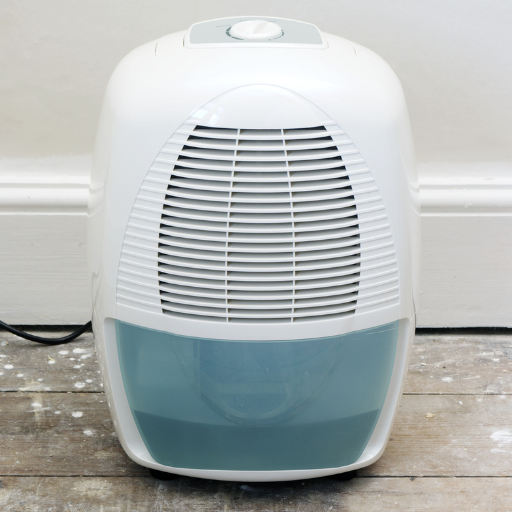
Drinking water from a dehumidifier is unsafe because there may be dangerous contaminants in it. The liquid collected by a dehumidifier is not filtered; instead, it is condensed from air, which may have microorganisms, bacteria, mold, chemical pollutants, or dissolved metals, depending on the environmental conditions. Moreover, since dehumidifiers are not made to filter water, their parts like the collection tank may have biofilm or other substances that can harm the water. So, drinking this untreated water can prove to be dangerous. Hence it should first be thoroughly filtered and disinfected to make it safe for drinking.
Possible dangers to one’s health posed by utilizing dehumidifier water
The water collected from a dehumidifier can harm one’s health due to the number of impurities it contains. Dehumidifiers tend to emit warm, moist air, promoting the growth of various microorganisms like bacteria, mold, and even certain fungal spores. This water can also contain chemical pollutants like VOCs derived from household items and even air particles. Depending on the composition of the area, a few trace metals, such as lead or nickel, might also be present. The water collected by dehumidifiers has the potential to show numerous pH levels, typically on the slightly acidic side, which means that metal leaching from the device is a possibility. This would only increase the levels of contaminants. Without sufficient treatment systems, these pollutants pose a health risk with the possibility of allergic reactions, chemical poisoning, or gastrointestinal infections.
The Tap Water and Bottled Water Comparison to Dehumidifier Water
About safety for consumption, dehumidifier water bears marked differences from bottled and tap water due to the treatment and quality differences. To make it safe for human use, tap water is usually subjected to numerous processes, including filtration, chlorine or chloramine disinfection, and often fluoridation. All these processes are necessary to attain the drinking water standards required by different agencies, such as the EPA in America. Some of the standard parameters for potable tap water are pH 6.5 to 8.5, low turbidity, which is less than one NTU, and no excessive heavy metal or harmful microorganism and chemicals.
Bottled water has many sources, which means that it is more likely to be subjected to the same regulations as municipal systems. Regardless of the source and brand, bottled water is expected to meet the standard set by the FDA. Additional purification procedures include reverse osmosis, distillation, and ultraviolet treatment. Some common parameters for bottled water include pH levels of 6.5 – 8.0, limited TDS concentration, and tight chemical and microbial contamination restrictions.
On the other hand, the water obtained through dehumidifiers is not treated and comes straight from air condensation. This type of water has the potential to collect a whole range of pollutants, such as pathogen microorganisms, volatile organic compounds, respiratory particulate matter, and even the metals that could have leached from the dehumidifier itself. In fact, in technical assessment, water produced by the dehumidifier is bound to be more acidic than normal tap water. Without proper filtration, the amount of microbes present increases to alarming levels. The water is then not suitable for consumption unless passed through elaborate purification systems akin to industrial-grade water purifiers. For these reasons, even though bottled and tap water are subjected to extreme treatment and monitoring, dehumidifier water is never put through these processes due to the high levels of contamination it is exposed to.
Expert opinions on drinking water from dehumidifiers
Dehumidifiers serve the simple function of extracting moisture and water from the air. However, the obtained water is not fit for consumption without severe purification treatment. Experts agree that dehumidifier water is unsafe due to harmful contaminants such as bacteria, mold, volatile organic compounds and even organic metals. With even advanced purification, the lack of suitable pre-treatment means water is still unsafe to drink. It is our best interest to seek out and invest in treated water that allows safe consumption.
Can filtering dehumidifier water make it safe for consumption?
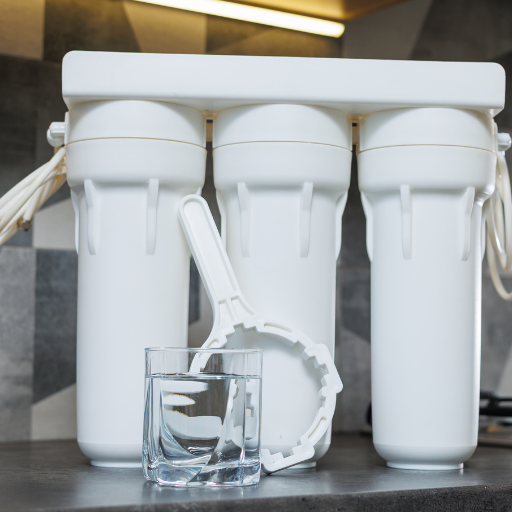
Just filtering water from a dehumidifier is not enough for it to be fit for consumption. The dehumidifier’s water undergoes contaminants and impurities but still has heavy metals, microorganisms, and chemical breakage. While filtration may help with particulates, these pesky unwanted compounds do not disappear. However, methods such as reverse osmosis, memcpy stem, and UV sterilization help to a certain degree but are not the cure all due to the sheer volume of contaminants found in the surrounding area plus the dehumidifier itself.
Types of Useable Filtration Systems
As mentioned above, the filters that can be used for the dehumidifier’s water are activated carbon filters, UV, and reverse osmosis. Overall, activated carbon filters are the most cost-effective because they remove chlorine, VOC, and some heavy metals using a technique known as adsorption. Adsorption is when contaminants get trapped on the surface of carbon material. Moreover, these systems are extremely reliable, operating with a flow rate between 0.5 and 2 gallons every minute. Although, I must caution you that regular maintenance needs to be done.
RO systems have a semi-permeable membrane that works on molecules and therefore can separate impurities from water on a molecular scale. These systems maintain a recovery ratio between 20% to 50% and a pure water production between 40 to 100 psi. The only downside to RO systems is that they produce wastewater, decreasing their efficiency. These systems can remove upto 99% of organic substances, heavy metals, and even salts.
UV light is a powerful and efficient tool for targeting bacteria, viruses, and other microorganisms. UV sterilizers can neutralize these entities and prevent potential growth without using harmful chemicals in the water. The system is designed to utilize the proper amount of intensity UV light above 40 mJ/cm square. Although while combining different systems, it is important to note that these methods do not cover all contaminants which could compromise the water quality.
Effectiveness of filters in removing contaminants
The level of contaminant removal with filters is contingent upon the particular method of filtration used and the individual contaminants. Activated charcoal filters can efficiently adsorb chlorine, several volatile organic compounds (VOCs), and some pesticides but are poor at removing dissolved salts and heavy metals. Removal of a broader range of contaminants, such as those dissolved in organic ions, heavy metals, and some microorganisms, can be achieved using Reverse osmosis systems. However, they are often prone to fouling, and so require pre-treatment. While UV sterilizers are unmatched in deactivating bacteria and viruses, they do not filter out particulates or absorb chemical contaminants. Different filtration methods work best when trying to achieve high water purity by managing multiple pollutants.
Issues Related to Water Filtration in Dehumidifiers
Although filtration challenges exist regarding the water collected from a dehumidifier, they can be adjusted to correct these issues. For starters, lead or copper heavy metals always exist in dehumidifier water, which comes from the internal parts of the machine. Lead and copper are not often filtered out in industrial filtration systems, including activated carbon ones. Furthermore, stagnant water within the dehumidifier makes bacteria and even molds grow. These issues can be taken care of with UV sterilization, however, alongside neutralized cells, dead cells and endotoxins are left behind. And finally, the compound also adds certain organic and volatile impurities that are typically disregarded via advanced methods, which are therefore required at the end. These factors highlight the need for a tailored purification approach when reusing dehumidifier water.
What are the alternative uses for dehumidifier water?
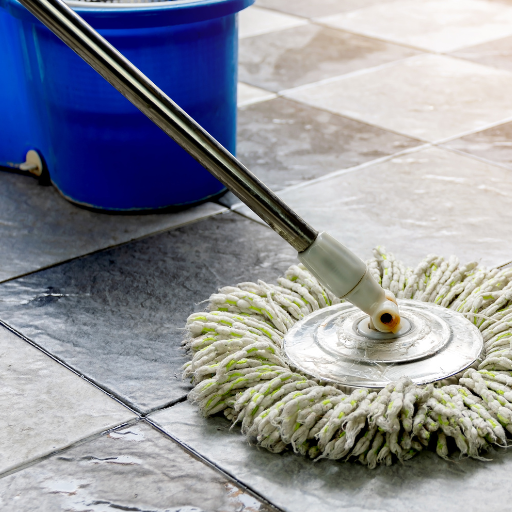
Due to its lack of minerals, dehumidifier water can be used in various ways that do not require the consumption of water. Therefore, it can be used to nourish non-consumed plants. Even while doing so, water must be free of pollutants, especially metals that can be harmful. This water is also acceptable for other cleaning activities like scrubbing floors or cleaning patio furniture, but it should be confined to surfaces without infection risk. Also, it can be used for washing cars, but only if no parts sensitive to scratches are coated with the water. On the other hand, there are more imaginative uses, for example dehumidifier water can be used in some less sensitive systems or processes as a coolant instead of purified water. Filters should be changed regularly and water must be properly cleaned prior to intake.
Watering plants and gardening applications
Because of pernicious contaminants, I use water from a dehumidifier solely on non-edible plants. I first make sure it has gone through a secondary filtration system to get rid of potential heavy metals or mold that may be present. This water can be advantageous for ornamental gardening because it has a low mineral content, which means there is a lower probability of salt buildup in the soil. Nonetheless, I do not use it on delicate plants or plants requiring stringent watering schedules, posing uncontrollable risks and inhibiting healthy growth.
Household cleaning and mopping
Dehumidifier water is also ideal for household cleaning and mopping, as it lacks hard minerals that may cause streaks or residues. Before use, I ensure it has been filtered to eliminate any possible contaminants, especially mold spores. This filtered water works well for cleaning floors, especially in areas prone to mineral buildup, and leaves surfaces spotless without any unnecessary residue. Irrespective of how good it is for cleaning, I do not use it in sensitive places where thorough sanitization is required, such as kitchens and bathrooms.
Other Creative Applications for Water Collected from Dehumidifiers
- Ironing Clothes
Thoroughly filtered dehumidifier water makes a terrific source of water for steam irons. The little amount of minerals in this water minimizes limescale buildup inside the iron, preventing clothes from getting stained while ironing and prolonging the iron’s lifespan. Just remember to filter the water before using it to remove any contaminants.
- Refilling Car Batteries
Some types of car batteries require the addition of demineralized water for maintenance. Properly filtered dehumidifier water can be a perfect replacement. This ensures that the battery is well taken care of without having any minerals that would affect the battery’s performance over time.
- Watering Indoor Plants
Certain houseplants, especially less delicate ones, can comfortably thrive with dehumidifier water after filtration. The low mineral content of the water makes it easier for the plants to grow without struggling with soil in the pot’s bottom. Test on a small scale first to ensure compatibility with your plants.
- Humidifier and Oil Diffuser Use
Dehumidifier water can be filtered and used in humidifiers and essential oil diffusers. Because of its low mineral content, the moisture in the air produced is ideal as it is less likely to leave behind white dust, an unsightly issue many encounter when the water used is hard water. Always filter the water to ensure that the appliance is not contaminated.
- Water for Outdoor Features
Dehumidifier water can be used to fill ornamental water features like fountains, birdbaths, or even pet ponds. This is an environmentally friendly method as it uses untreated water straight from the tap. Furthermore, as the water’s mineral content is low, it is less likely to leave marks when it evaporates, making it perfect for use in outdoor items that need to be kept looking nice.
How can you ensure the quality of water from your dehumidifier?
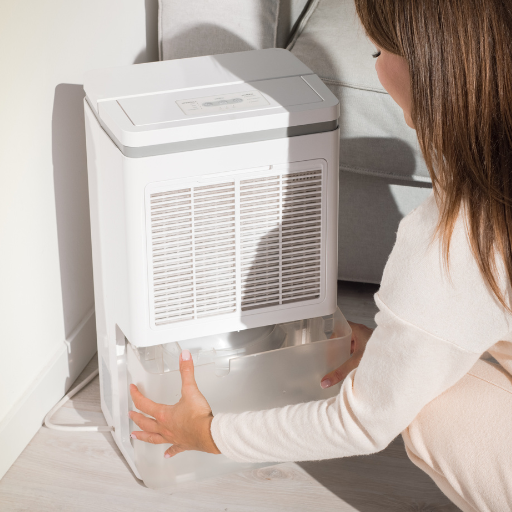
Make an effort to clean the water collection tank as it will ensure the water removed from your dehumidifier does not have any microorganisms, mold, or algae. Coils and filters also need to be cleaned and taken care of to reduce debris contamination. If the water is meant to be reused, filter it to remove any remaining impurities. In addition to cleaning the tank, remember to empty it regularly so stagnant water does not give rise to the formation of microorganisms. For cleaning, warm water and a mild soap detergent works best. Lastly, always keep in mind to do a deep rinse.
Keeping all the information listed above in mind, cleaning and removing the dehumidifier’s wires will ensure the machine is fully safe and secure. While ensuring the water quality, an easy method to check is cleaning the tank every week without fail. Ensure to set a reminder to prevent the build-up of microorganisms, which can be harmful over time. Nonabrasive soaps paired with warm water are a must, so the attack is reduced, which means no scrubbing blades. During the summer months, check the air filters every two weeks, while in winter, check them three to four weeks.
Assessment of Water from Dehumidifiers for Possible Contaminants
Assessing water from dehumidifiers for possible contaminants is crucial, especially when repurposing such water. One should first check the water for cloudiness, sediments, and discolorations that could suggest evidence of contamination or possible microbes. Employ the use of a water testing kit or strips to check for bacteria, fungi, or heavy metals. Additionally, a small quantity should be taken for laboratory testing, as this will provide more information about the water. Consider the water source because different dehumidifiers coupled with varying environmental settings can lead to other contaminants.
Water Collection Best Practices and Storage Procedures
When collecting water that is to be stored for a long time, make sure the container you use is clean, food safe and with a good lid to prevent contamination. Initially, the barrel must be sanitized and then stored in a dark and cool place to prevent any microbe activity. Do mark the container with the collection date and refrain from keeping the water for long periods. Continually check the stored water for discoloration, sedimentation, or odor; if any signs point to contamination, make sure to dispose of the water.
What are the environmental implications of using dehumidifier water?
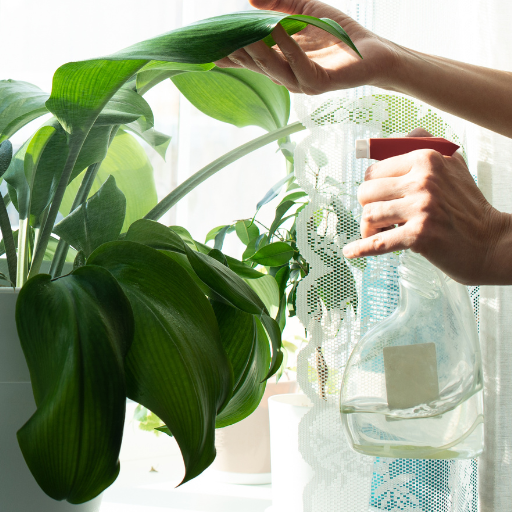
The use of dehumidifier water comes with its own set of environmental consequences. Dehumidifier water can be utilized indiscriminately for watering plants or cleaning, which helps preserve freshwater reserves. In the process, one must avoid heavy metals or microbial agents that could cause collateral damage, especially to the soil structure and plants. Furthermore, when untreated dehumidifier water is poured into areas where it can infiltrate into the ecosystem, it leads to dreadful groundwater pollution. If used carefully, these water gives a new dimension to sustainable practices while solving environmental issues.
Water Stewardship Management
The collected dehumidifier water is considerably cost-effective and convenient for irrigation and even industrial use. During dry seasons, recycled water serves as a boon. The only lingering issue remains whether the tainted water is properly sanitized before use. While water purification is extremely effective in filtering out a vast majority of contaminants, microorganisms and chemicals could drastically change the environment.
Important features when thinking of energy consumption
When considering energy consumption factors, the primary goal is to curtail avoidable consumption and to maximize efficiency. Where possible, measures such as using energy-efficient devices, installing smart homes to monitor and control usage, and moving towards solar-powered systems must be taken. In addition, these include removing from use devices that draw power but are not being used, switching to LED lights, and servicing the central heating and air conditioning units. These actions work toward the same goal of savings on costs and environmental depletion, representing global ecological change.
Reference sources
Frequently Asked Questions (FAQs)
Q: Is it safe to drink the water from a dehumidifier?
A: Generally, it is not recommended to drink water from a dehumidifier. While the condensate is essentially distilled water, it can contain bacteria, microorganisms, and trace amounts of metals from the unit itself. Unlike distilled water produced for consumption, dehumidifier water is not safe for drinking without proper treatment.
Q: What are some good uses for dehumidifier water?
A: There are several safe ways to use dehumidifier water. You can use it to water non-edible plants, flush toilets, iron clothes, or clean outdoor areas. It’s also great for washing cars or filling a compost bin. However, avoid using it on edible plants or for any purpose that involves human consumption.
Q: Can I use dehumidifier water to water my plants?
A: You can use dehumidifier water to water non-edible plants. However, it’s not recommended for edible plants due to potential contamination from bacteria and microorganisms. If you choose to use it for plants, it’s best to use it on outdoor ornamental plants rather than indoor or food-producing plants.
Q: Why is the water from a dehumidifier not safe to drink?
A: Dehumidifier water is not safe to drink because it can contain harmful bacteria, mold spores, and other microorganisms. Additionally, as the water passes through the unit, it may pick up small metal particles from the evaporator coils or other components. These contaminants make the water unsafe for human consumption.
Q: Is dehumidifier water the same as distilled water?
A: While dehumidifier water is similar to distilled water in that it’s created through condensation, it’s not the same as commercially produced distilled water. Dehumidifier water can contain impurities from the air and the unit itself, making it unsafe for uses that require pure distilled water, such as in medical equipment or certain automotive applications.
Q: Can I make dehumidifier water safe to drink?
A: While it’s technically possible to treat dehumidifier water to make it potable, it’s not recommended. The process would require extensive filtration and sterilization, such as reverse osmosis or distillation, followed by proper testing to ensure safety. It’s much safer and more practical to use fresh water from a reliable source for drinking.
Q: What should I do with dehumidifier water if I can’t use it?
A: If you can’t find a use for your dehumidifier water, it’s perfectly fine to pour it down the drain. Many modern dehumidifiers come with a hose attachment that allows for continuous drainage, eliminating the need to manually empty the bucket. This is an energy-efficient and convenient solution for managing the collected water.
Q: Are there any risks associated with handling dehumidifier water?
A: While dehumidifier water isn’t particularly dangerous to handle, it’s best to practice good hygiene. Wash your hands after coming into contact with the water, especially if you have any open cuts or wounds. If your home is particularly damp, the collected water might contain a higher concentration of mold spores, so take care not to splash or aerosolize the water when emptying the bucket.



